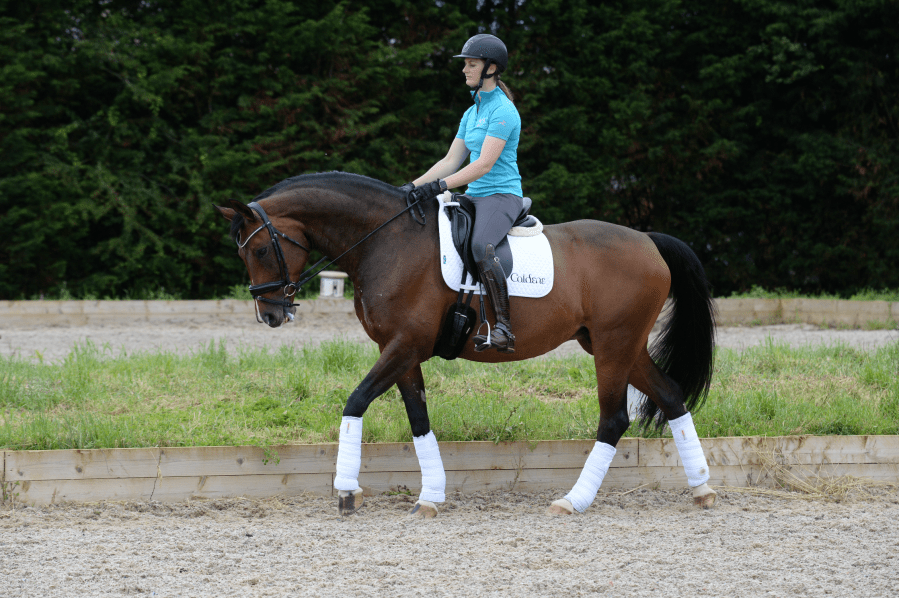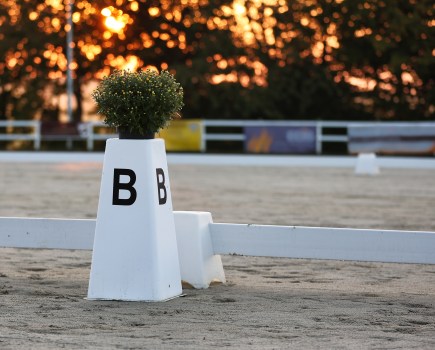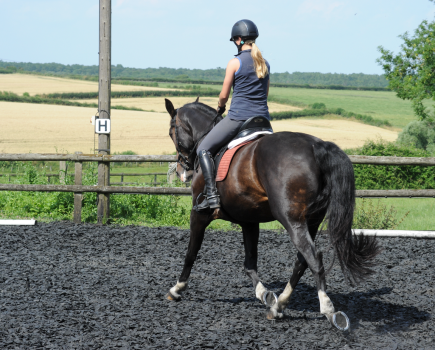How much time do you spend working your horse in walk when you’re schooling? Of all the paces, walk is the most overlooked. We walk to warm up and get moving, but we’re keen to transition to trot as soon as possible.
Many top dressage riders and coaches will tell you that the walk is the most difficult gait to train in a horse, presenting all kinds of interesting problems. How your horse walks, therefore, demands attention so that you don’t lose valuable marks in your dressage test — especially considering that, in some places, it’s worth double marks.
Walk movements are included at all levels of training and competing, from youngsters in-hand to grand prix level dressage, and some are worth double marks.
Schooling in walk can also help to develop and improve your horse’s way of going in the other paces too.
Types of horse walk
“Walk is a four-beat gait. When viewed from the side, you should be able to see a distinct ‘V’ shape formed by the handle and the corresponding foreleg just before the fore hoof lifts,” explains dressage rider and trainer Emma Woolley.
“A horse’s walk is a pace without suspension. This mean there will always be at least two hooves on the ground at any given point in the sequence — at no stage are all four hooves in the air.”
Free walk
In free walk, the horse is relaxed and supple over their back. Their head and neck stretches out and down, and there is a clear over-track (this is where the hind hoof steps in front of the hoof print made by the foreleg, rather than in it.
“Free walk is a movement included in all dressage tests up to medium level. This movement is ridden on a long rein, not a loose one. Your horse should march forwards and look as if they’re going somewhere,” says Emma.
Extended walk
In extended walk, the horse is in a longer frame and showing maximum ground cover with a greater over-track than the other types of walk.
“Horses are required to show extended walk in elementary tests upwards. When done correctly, your horse is in a long frame, stretching out their head and neck and covering as much ground as possible,” adds Emma.
Collected walk
In collected work, the horse has shorter steps and is showing more elevation and activity in hind leg. The rider has a shorter rein and the horse is working in a higher frame.
“A horse is first asked to show collected walk in dressage tests at medium level. It isn’t an easy pace to ride and train, and I recommend that you wait until your horse can confidently collect their trot and canter before tackling collection in walk,” advises Emma.
Medium walk
A horse is expected to show medium walk in all dressage tests, starting at intro level. The horse should stride forward with purpose (think marching) and the rhythm should be regular and relaxed, but with energy. The judge will be looking to see that the footfalls are correct and the rhythm is consistent.
Video
Being able to ride a good walk begins with understanding what the different types of horse walk should look like.
In the following video, Emma demonstrates free, extended and collected horse walk:
How to train a horse in walk
There are times when it is a particularly good idea to spend time training at a slower pace. Perhaps the horse you are riding is not fit, the ground is hard in the summer or soft in winter, or you’re warming up cold muscles for a schooling session. In these scenarios, training horse at walk comes into its own.
Exercise 1: Create suppleness
“Riding exercises in walk is a great way to develop your horse’s suppleness. It also prepares a horse for whatever is coming next in the session,” says Emma, who begins by first checking her horse’s reactions.
“I’ll ask my horse to transition from free walk to a medium walk, and then walk to halt. I’m looking to see whether they are reacting quickly enough without snatching the bit or falling onto the forehand.”
Your horse should be even in the hand, with the same amount of bit showing on each side of the mouth. Once they’re moving forwards nicely, sit with your legs hanging loose and let your horse walk on without you nagging with your legs.
“When I transition to trot, I want the first stride to give me a good feel,” adds Emma. “If I’ve done the work in walk, this is usually the case. If not, I go back to walk and work on it some more. When you don’t do this, the trot can take too long to come together.”
Exercise 2: Improve stiffness and hollowness
This exercise is ridden on a 15m or 20m circle, depending on what your horse can cope with. It creates softness and suppleness in horses of any age and all levels of training.
How to do it
- “Use your inside rein to softly flex your horse so that their nose comes around towards your toes. It’s not a forced movement — don’t take them further than they’re capable of,” says Emma.
- “Hold your horse in this position as you walk, until you feel them melting into a soft outline and accepting the bit.
- “Once this has happened, release the horse into a long, low stretch.”
Exercise 3: Move laterally
“I train all lateral work in walk first to ensure my horse understands what I’m asking, and to give them time to take it all in,” explains Emma. “It also develops evenness and flexibility.”
One of Emma’s favourite exercises is to ride a shoulder-in to renvers.
“The long side of the school is a good place to ride this as having the boundary of the arena fence helps your horse to stay on the right line without wobbling,” she explains.
“Ask for shoulder-in first and hold this until the horse feels balanced. Then change the bend into renvers, without halting. It’s a soft change so there’s no need to rush the horse,” continues Emma. “Your legs are there to keep the sideways movement and forward momentum. Straighten up before the end of the long side and ride away.”
Exercise 4: Random movements
Riding a turn-on-the-forehand and turn-on-the-haunches creates suppleness and helps your horse to understand and respect the leg aids. Riding the movements randomly also encourages the, to listen.
“I walk in a large square initially and ask for either a turn on the forehand or haunches in the corners to put us onto the next straight line,” explains Emma, from WSC Dressage. “Sometimes I make this a 180-degree turn to change the rein.”
Keep your horse interested by mixing up the exercises. Go large and make the turns in the corners, for instance, or ride a circle.
“To add to the suppling effect I’ll sometimes ask for a bend in the turn, and then other times I’ll keep the horse straight. There are no rules to this,” adds Emma.
Main mage & video © Your Horse Library/Kelsey Media Ltd









